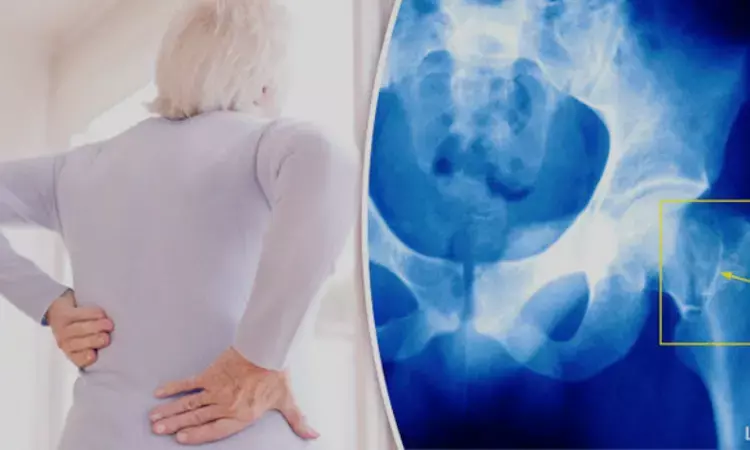- Home
- Medical news & Guidelines
- Anesthesiology
- Cardiology and CTVS
- Critical Care
- Dentistry
- Dermatology
- Diabetes and Endocrinology
- ENT
- Gastroenterology
- Medicine
- Nephrology
- Neurology
- Obstretics-Gynaecology
- Oncology
- Ophthalmology
- Orthopaedics
- Pediatrics-Neonatology
- Psychiatry
- Pulmonology
- Radiology
- Surgery
- Urology
- Laboratory Medicine
- Diet
- Nursing
- Paramedical
- Physiotherapy
- Health news
- Fact Check
- Bone Health Fact Check
- Brain Health Fact Check
- Cancer Related Fact Check
- Child Care Fact Check
- Dental and oral health fact check
- Diabetes and metabolic health fact check
- Diet and Nutrition Fact Check
- Eye and ENT Care Fact Check
- Fitness fact check
- Gut health fact check
- Heart health fact check
- Kidney health fact check
- Medical education fact check
- Men's health fact check
- Respiratory fact check
- Skin and hair care fact check
- Vaccine and Immunization fact check
- Women's health fact check
- AYUSH
- State News
- Andaman and Nicobar Islands
- Andhra Pradesh
- Arunachal Pradesh
- Assam
- Bihar
- Chandigarh
- Chattisgarh
- Dadra and Nagar Haveli
- Daman and Diu
- Delhi
- Goa
- Gujarat
- Haryana
- Himachal Pradesh
- Jammu & Kashmir
- Jharkhand
- Karnataka
- Kerala
- Ladakh
- Lakshadweep
- Madhya Pradesh
- Maharashtra
- Manipur
- Meghalaya
- Mizoram
- Nagaland
- Odisha
- Puducherry
- Punjab
- Rajasthan
- Sikkim
- Tamil Nadu
- Telangana
- Tripura
- Uttar Pradesh
- Uttrakhand
- West Bengal
- Medical Education
- Industry
New Study Shows Chest CT Scans Can Predict Hip Fracture Risk Using PMI and T4HU

China: In a recent study published in Orthopaedic Surgery, researchers discovered that chest CT scans-commonly used for diagnosing respiratory conditions-can also serve as a valuable tool for assessing the risk of hip fractures.
The study found that chest CT scans, conducted for other medical reasons, can predict hip fracture risk by assessing the pectoral muscle index (PMI) and the attenuation values of vertebral bodies. Using CT scans in this manner demonstrates an impressive area under the receiver operating curve of 0.86.
The research team noted, "Our findings reveal that, compared to the healthy control group, individuals with hip fractures were older and exhibited lower body mass index, bone mineral density, T4 Hounsfield Units (T4HU) at the fourth thoracic vertebra, and pectoral muscle index volume."
Hip fractures (HF) are often referred to as the "last fracture of life" for the elderly, making their risk assessment critically important. While research into the link between chest computed tomography (CT) imaging and HF has been limited, recent findings offer new insights.
Sheng Pan, Department of Osteoporosis, The Second Affiliated Hospital of Soochow University, Suzhou, China, and colleagues showed that PMI and vertebral body attenuation values obtained from chest CT scans can predict HF risk. This approach provides an opportunistic method to evaluate HF risk in patients without access to bone mineral density (BMD) testing, leveraging chest CT scans performed for other medical conditions.
In a retrospective study from January 2021 to January 2024, 800 participants with BMD measurements and chest CT scans were initially enrolled. Following exclusions, 472 patients were included in the final analysis, categorized into a healthy control (HC) group and a hip fracture (HF) group.
Clinical data were gathered and compared between the two groups. A predictive model was developed using logistic regression, incorporating the pectoral muscle index (PMI) and the Hounsfield units of the fourth thoracic vertebra (T4HU). The model's predictive accuracy was evaluated through receiver operating characteristic (ROC) curve analysis. Additionally, decision curve analysis (DCA) and clinical impact curves were used to assess the model's practical utility in a clinical setting.
The following were the key findings of the study:
- PMI and T4HU were lower in the HF group than in the HC group; low PMI and low T4HU were risk factors for HF.
- The predictive model incorporating PMI and T4HU based on age and BMI had excellent diagnostic efficacy with an area under the curve (AUC) of 0.865, sensitivity, and specificity of 0.820 and 0.754, respectively.
- The clinical utility of the model was validated using calibration curves and DCA.
- The AUC of the predictive model incorporating BMD based on age and BMI was 0.865, with sensitivity and specificity of 0.698 and 0.711, respectively.
- There was no significant difference in diagnostic efficacy between the two models.
The researchers concluded that PMI and T4HU are effective predictors of hip fractures. In the absence of dual-energy x-ray absorptiometry (DXA), they found that assessing PMI and T4HU from chest CT scans performed for other medical conditions can reliably gauge HF risk. This method allows for timely intervention and treatment, potentially reducing the incidence of hip fractures.
Reference:
Wang, X. Y., Yun, S. M., Liu, W. F., Wang, Y. K., Pan, S., & Xu, Y. J. Opportunistic Assessment of Hip Fracture Risk Based on Chest CT. Orthopaedic Surgery. https://doi.org/10.1111/os.14224
Dr Kamal Kant Kohli-MBBS, DTCD- a chest specialist with more than 30 years of practice and a flair for writing clinical articles, Dr Kamal Kant Kohli joined Medical Dialogues as a Chief Editor of Medical News. Besides writing articles, as an editor, he proofreads and verifies all the medical content published on Medical Dialogues including those coming from journals, studies,medical conferences,guidelines etc. Email: drkohli@medicaldialogues.in. Contact no. 011-43720751


